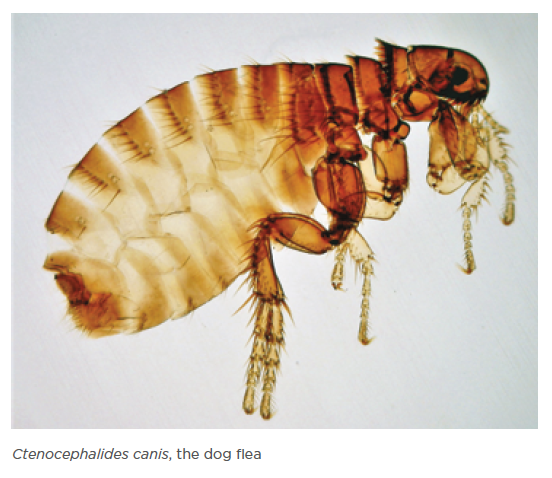Fleas
Due to climate variations across the country, Canada has highly variable distributions and abundance of fleas, and multiple species of fleas, some of which primarily infest dogs and cats, while others only temporarily infest dogs and cats in contact with wildlife.
Due to climate variations across the country, Canada has highly variable distributions and abundance of fleas, and multiple species of fleas, some of which primarily infest dogs and cats, while others only temporarily infest dogs and cats in contact with wildlife. Infestations of dog and cat fleas are primarily maintained in the environment. These include areas well protected from temperature fluctuations and the sun, and areas with high humidity that maximize development of environmental stages of fleas (larvae and pupae). Dogs and cats in multi-pet households and those that spend a great deal of time outdoors in areas frequented by a large number of potentially untreated pets (e.g. at dog day cares, off-leash areas, etc.) are at greatest risk. Flea infestations may be introduced into neighbourhoods through wildlife, particularly in much of western Canada where wildlife are the major source of fleas. Do not allow pets to roam in areas where they can contact animal dens or nest sites, and prevent contact with wildlife (e.g. raccoons, coyotes, foxes, skunks, weasels) by keeping wildlife out of yards used by pets.

Dogs and cats in areas endemic for fleas or that might come into contact with fleas via infested animals or environments should receive monthly preventive treatment during the at-risk season, which is typically late spring, summer, and early fall, but could be year-round in some regions. In particular, flea-allergic pets or those susceptible to flea allergy should be treated regularly with an adulticide.There are a wide range of oral and topical flea preventive products. Note that products containing pyrethroids are generally not safe for use in cats and should not be used on dogs in households with cats.
When fleas are diagnosed on a dog or cat, all pets in the household should be treated to remove adult fleas and to prevent re-infestation. Using a product that has residual activity is recommended and typically does not require treatment of the household environment. To establish realistic expectations, pet owners should be educated by their veterinarian on flea life cycles and how various products work (e.g. adulticides vs. insect growth regulators). It is also important to identify and address the origin of the infestation. Eliminating flea infestations may require five to six months of treatment, especially if a non-residual product is used or if the environment is not addressed. Environmental treatment may be required for a heavy infestation or when there are flea-allergic pets and/or people in the household.
